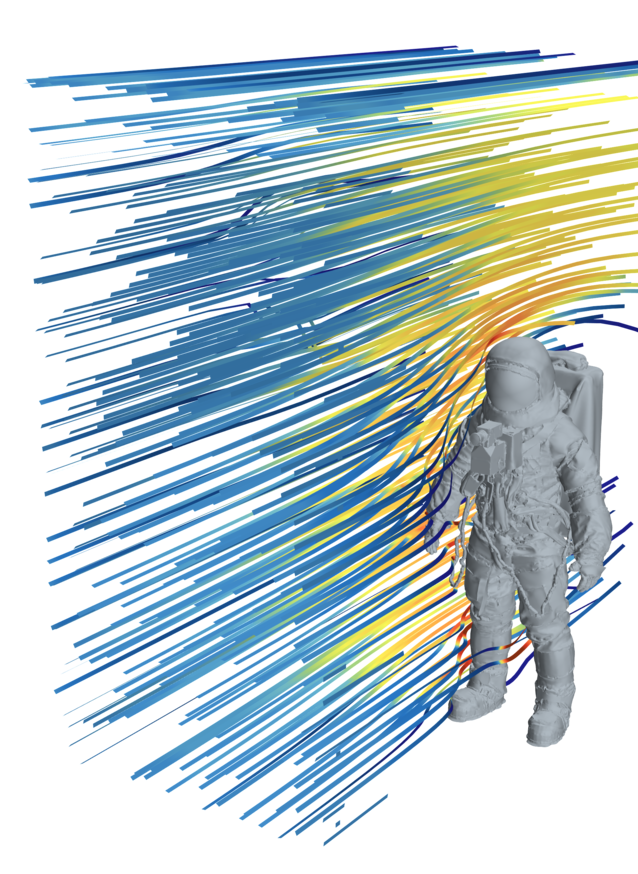Lunar dust- killer criterion for longer lunar missions?
![[Translate to English:] Merkle CAE Solutions Mondstaub Raumfahrt [Translate to English:] Merkle CAE Solutions Mondstaub Raumfahrt](/fileadmin/_processed_/b/0/csm_Teaserblog_114_Mondstaub_bcce2708b2.png)
Lunar missions are a fascinating endeavor that has driven humanity in recent decades. Lunar exploration presents not only scientific challenges, but also technological and strategic ones. One of the potentially critical factors that must be considered in lunar missions is the abrasive lunar dust, also known as "regolith," that covers the lunar surface.
Composition and formation of lunar dust:
Lunar dust is the result of billions of years of micrometeorite impacts on the surface of the Moon. It consists of tiny particles created by the impact and fragmentation of lunar rocks. Since the Moon has no atmosphere, there is no wind to carry the dust away, causing it to accumulate on the surface over time. In addition, the dust is extremely sharp-edged for this reason, since it cannot abrade as it does on Earth.
Challenges from abrasive lunar dust:
a) Technical problems: Lunar dust is extremely abrasive and can wear materials rapidly. It can cause damage to spacecraft, spacesuits, instruments, and other equipment essential for lunar landings and surface exploration.
b) Health risks: Moon dust consists of sharp and fine particles that can be easily inhaled into the lungs or respiratory tract. Because the particles are very small, they could even penetrate the fasteners and
sealing systems of space suits.


The long-term effects of exposure to lunar dust on human health are not yet fully understood. Particularly critical are the eyes, which can be injured by lunar dust, which is mission relevant.
c) Optical problems: Lunar dust can affect visibility by settling on helmet visors or camera lenses, reducing visibility. This could make navigation and the astronauts' work more difficult.
d) Electrical challenges: Lunar dust is electrically charged as it is affected by the constant interaction with the solar wind. These charges could interfere with or even damage electronic equipment.
Overcoming the challenges:
To minimize the negative effects of lunar dust during lunar missions, scientists and engineers must develop innovative solutions. Some possible approaches are:
(a) Materials research: The development of resistant materials that are better protected against lunar dust abrasion could be critical.
(b) Cleaning Techniques: Efficient methods must be developed to regularly clean lunar dust from spacecraft, suits, and instruments to ensure their functionality.
(c) Protective measures: Astronauts must be equipped with special protective clothing systems that minimize the penetration of lunar dust into the suits and at the same time protect their health.
(d) Preventive measures: Placing barriers or shields at strategic locations on the Moon could help reduce the impact of lunar dust on technology.
Lunar exploration is undoubtedly one of humanity's greatest achievements, but it is not without its challenges. Overcoming the potential problems posed by abrasive lunar dust is critical to making future lunar missions safer and more successful. Through continued research and innovative technologies such as engineering simulations, we can overcome these hurdles and gain the valuable insights that the Moon holds for our understanding of the universe.
We take a closer look at one aspect below, namely possible cleaning techniques.

In a highly interesting report about 5 minutes long on Servus TV, our customer, Dr. Axel Müller from OHB, explains why a longer stay on the moon is not entirely unproblematic.
You don't necessarily have to race across the lunar surface in a lunar mobile; a walk on the moon is enough to push astronaut suits to their limits due to lunar dust.
At the same time, he demonstrates a solution for using CO2 crystal cleaning to remove the sharp-edged and highly abrasive regolith in an airlock. Whether avoidance or cleaning, the solution probably lies in a combination of all possibilities, depending on the application.
As a strategic partner of OHB, Merkle CAE Solutions supports the scientific investigation, evaluation and optimization of such concepts with CFD flow simulations and particle simulations.
Detailed modeling of astronaut suits, equipment and habitats is part of the Merkle CAE Solutions simulations, as well as the description of the behavior of particles during cleaning and transport, or the behavior on dust-resistant surfaces.
Please have a look at the video of Servus TV PM Wissen under the following link.
As always, I look forward to your comments.
Yours Stefan Merkle

PS: Dust on the ground also burns the eyes.
